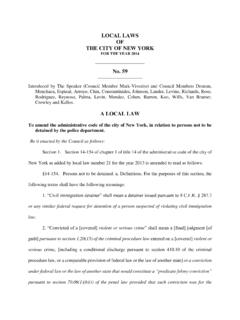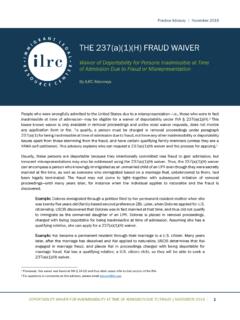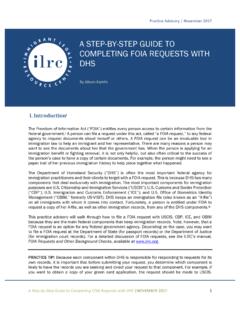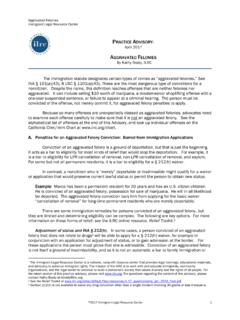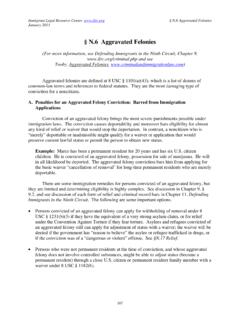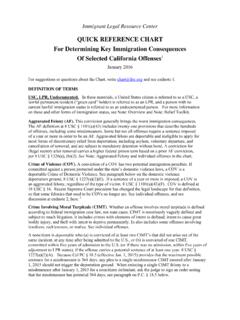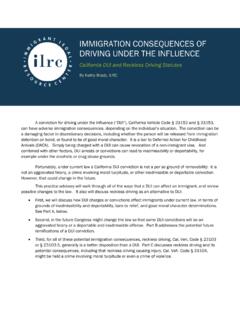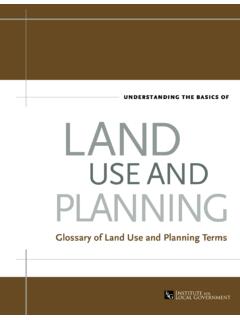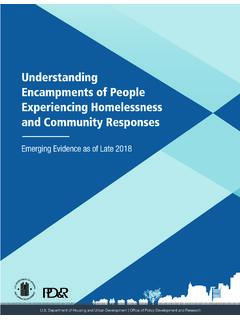Transcription of Understanding City Government Structures in Texas
1 JULY 20201 Understanding city Government Structures IN Texas GENERAL-LAW VS. HOME-RULE Determining your city s Government structure depends on whether it is (1) a general-law city , or (2) a home-rule city . This distinction also determines the scope of your city s power. Cities with a population of more than 5,000 may become home-rule cities; the rest are general-law cities. General-law cities have only those powers that state law authorizes. Conversely, home-rule cities may have powers that are not prohibited by the state constitution or state laws, and their Government Structures are set out by their municipal charter. General-law municipalities have different options for their forms of Government , depending on population size and type (Types A, B and C are described in the Texas Local Government Code). Thus, if the city is a general-law city , refer to the Texas Local Government Code for more information about the city structure .
2 If it is a home-rule city , refer to the city s charter. This advisory mainly focuses on home-rule are two major forms of city Government in Texas : (1) Mayor-Council and (2) Council-Manager. The Mayor-Council category can be even further broken down to strong-mayor versus difference between the forms is the authority of the Mayor, city Council, and the city Manager. MAYOR-COUNCILIn a Mayor-Council municipality with a strong-mayor form, such as Houston, the Mayor has great authority. As the city s chief administrator, official representative and political head, the Mayor is responsible for the general management of the city and for ensuring that all laws and ordinances are enforced. The Mayor s administrative duties include the appointments, without Council approval, of department heads and persons serving on advisory boards. The Mayor has exclusive authority to set agendas for city Council meetings, and prepares and administers the city budget.
3 In weak-mayor cities, the mayor s autonomy is much more limited. city Council has a voice in staffing of city agencies, the agenda, and overall spending/budget. There are very few cities in Texas that use the weak-mayor form. COUNCIL-MANAGERIn a Council-Manager municipality, the Mayor often has no more authority than a city Council member, except for ceremonial duties. Instead, the city Council makes laws and broad policy decisions, and the city manager is responsible for ensuring those policies are carried out. Texas s most populous cities (Austin, Dallas, San Antonio, El Paso, Fort Worth, Arlington, Corpus Christi, Plano, and Laredo) all have a Council-Manager form of Government , except for 20202 For more information and details regarding forms of city Government in Texas and the authorities of various officials within those forms of Government , see Texas Municipal League, 2019 Handbook for Mayors and Councilmembers, available at DUTIES, POWERS, AND RESPONSIBILITIESM ayorMayor(sometimes confirmed by Council) Mayor city CouncilMayor(sometimes confirmed by Council) city Council city Council city Council city CouncilCity Manager(with restrictions) city Council city CouncilCity Manager(sometimes confirmed by Council) city ManagerMAYOR-COUNCIL(STRONG MAYOR)MUNICIPALITYS ource.
4 The University of Texas at Austin-LBJ School of Public Affairs, city of Austin Government structure : a Comparative Analysis, available at OF city S CHIEF ADMINISTRATOR APPOINTMENT OF DEPARTMENT HEADS APPOINTMENT OF ADVISORY BOARDSPREPARE BUDGETAPPROVE BUDGETPASSAGE OF ORDINANCESAND 20203 Texas city OFFICIALS1 Presiding officer of city Council; may call meetings and set agendas depending on city structure Head of emergency management Some appointive powers, signatory duties, and ceremonial duties Leads policy priority process May appoint task forcesMAYORELECTEDAT-LARGE Broad policy-making authority, including passing ordinance and resolutions Oversees the direction of the city and the city Manager Approves city budgeted purchases Fills vacancies in appointive offices Sets salaries and benefits for city employees Sets the city s budget (including department budgets) and tax rate Signs and authorizes contracts May appoint task forcesCITYCOUNCILELECTED Serves as a licensed peace officer.
5 Responsible for enforcing criminal state and traffic laws and municipal ordinances Oversees city police department, including budget, operations and conduct of police officers Manages and operates city jail, if applicable Provides security; serves arrest warrants Serves as bailiff for municipal courtsAPPOINTEDPOLICE CHIEF Prosecutes municipal code violations Provides legal advice to city Council and other city officials Brings civil legal actions on behalf of the city and defends the city in lawsuits against it Writes and reviews city legislation, such as ordinances and resolutions Keeps elected officials apprised of the latest developments in city law and legislationAPPOINTEDCITY ATTORNEY Implements policy decisions made by Mayor and city Council Manages the city budget, prepares budget recommendations, and monitors city s financial position Coordinates city operations and programs, and recommends improvements Appoints city employees who are not appointed by city Council Supervises city departments, and may remove department heads (such as Police Chief)
6 Oversees enforcement of non-criminal municipal laws and ordinances May authorize some expenditures without city Council approval APPOINTEDCITY MANAGER1 Elected city officials usually serve 2 or 4-year terms, depending on the position, unless they resign or are removed from office. They may be re-elected and serve an unlimited number of terms.
